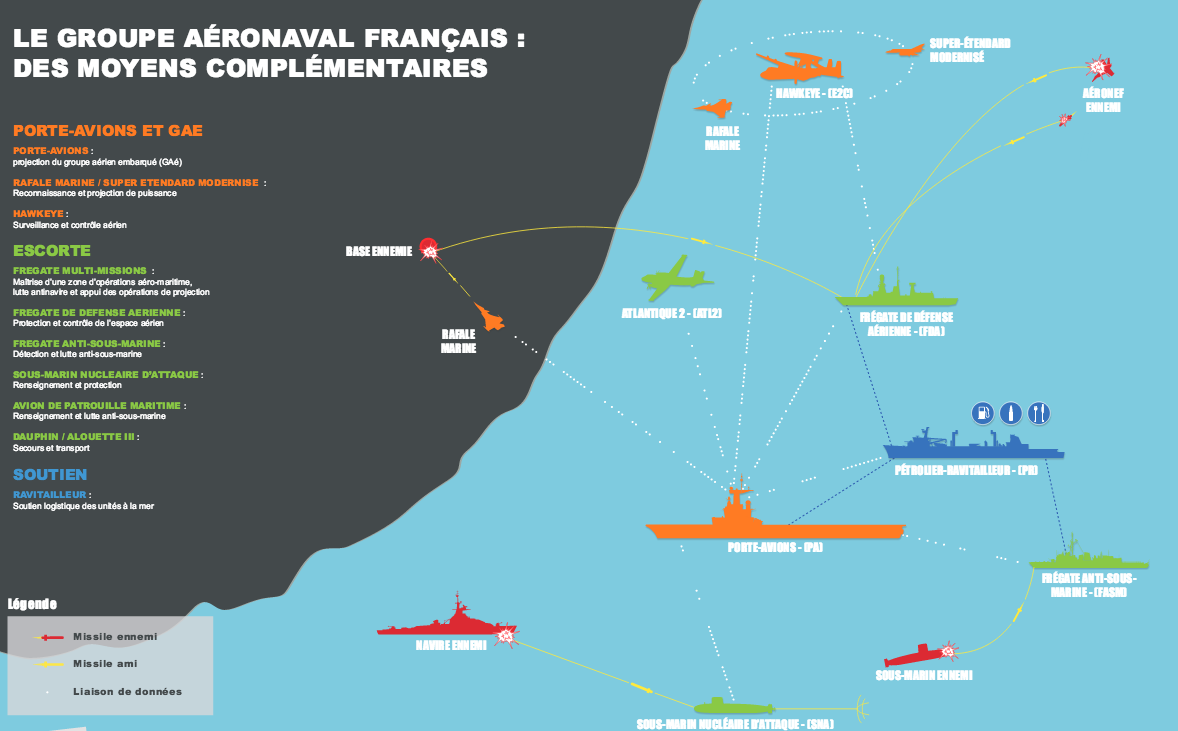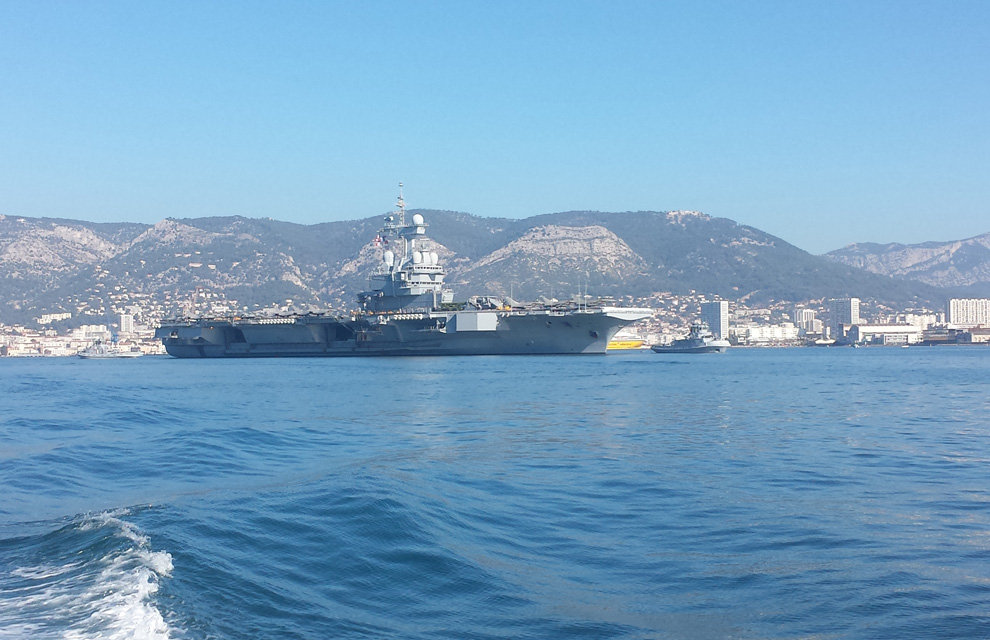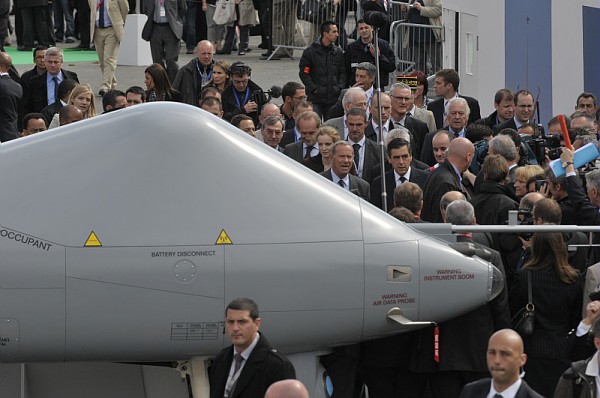Head southeast for the aircraft carrier Charles-de-Gaulle
 (B2) The Charles-de-Gaulle, the French aircraft carrier, left Toulon this morning and set course for the eastern Mediterranean. Objective: quickly take part in operations against Daesh.
(B2) The Charles-de-Gaulle, the French aircraft carrier, left Toulon this morning and set course for the eastern Mediterranean. Objective: quickly take part in operations against Daesh.
Triple the strike force on Syria
With its 18 Rafale Marine and 8 Super Etendard (modernized), the ship has a substantial strike force which " will make it possible to multiply by three the military potential of the French means engaged in the Levant against Daesh ” we specify to the staff of the armies. The distance will also be shorter to Syria. The Charles-de-Gaulle will then go to the Arabian Persian Gulf.
A group of at least 6 ships
The naval air group which is formed around the Charles-De-Gaulle includes 5 other buildings including a Belgian and a British:
- air defense frigate Chevalier Paul (+ Cayman Marine helicopter);
- the British anti-aircraft frigate Hms defender (+ Lynx and Merlin helicopters);
- anti-submarine frigate La Motte Piquet (+ Lynx helicopter) until mid-January 2016 then relayed by the FREMM frigate Aquitaine (with 1 Cayman Marine helicopter);
- the belgian frigate Leopold I (+ Alouette III helicopter) until January 4 which, according to our information, should provide patrol protection for the GAN;
- the BCR command and supply building Marne (+ Alouette III helicopter)
The frigate FREMM-Provence (+ 1 Cayman Navy) will take over in the Persian Gulf during the long-term deployment. From time to time, American naval and air assets will reinforce it. And the presence of other buildings of other allied nations - without specifying the nationality - is announced.
The air group embarked on board the "Charles" includes in addition to the Rafale Marine and Super standard already mentioned: 2 Hawkeye, 2 Dauphin and 1 Alouette III.
Joint maneuvers and naval diplomacy
During its deployment, the carrier battle group will also participate in joint maneuvers in a multinational and combined framework, as well as bilateral maneuvers with the countries of the region. In the Arabo-Persian Gulf, the GAN will command Task Force 50 for several weeks.
Arromanches 2 mission for the TF 473
Small name of this Task Force, commanded by Rear Admiral René-Jean Crignola = TF 473 or Mission "Arromanches 2" for the most romantic. Important clarification: the GAN will be placed first under the operational control (OpCon) of the commander of the maritime zone in the Mediterranean then, as soon as it enters the Indian Ocean and until it leaves the Arabo-Persian Gulf , under the command of the naval component of the coalition and, finally, on the return trip, to the crossing of the Suez Canal, under the authority of the commander of the maritime zone of the Indian Ocean (Alindien).
A question
It remains to be seen what attitude the command will adopt if refugee boats approach the shore. The law of the sea dictates that they come to help if they are in distress. But security issues will inevitably arise, more important than before, in the post-Paris attacks context. No doubt a theoretical question given the distance from the coasts at which the carrier battle group will evolve. But not entirely excluded...
(Nicolas Gros-Verheyde)
What does a carrier battle group do? A good diagram is better than a long speech



